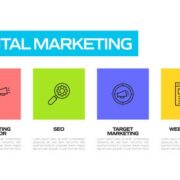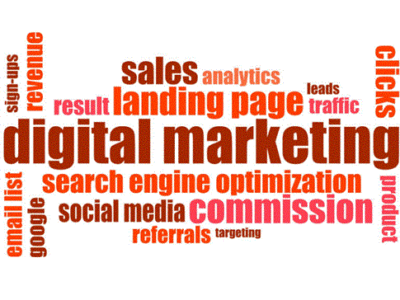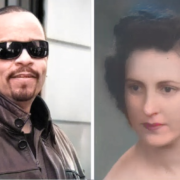In today’s digital landscape, capturing and retaining an audience’s attention has become more challenging. With social media, websites, and online advertising flooded with content, visual storytelling has emerged as a powerful tool in digital marketing.
It allows brands to communicate messages more effectively, evoke emotions, and connect with consumers more deeply. A brand’s story can be shared memorably through visuals, making it easier for the audience to understand and relate to.
Visual storytelling in digital marketing is more than just including images; it’s about crafting a narrative through those visuals to build a connection. Whether through videos, infographics, or images, well-crafted visual storytelling can engage viewers, compel them to take action, and help businesses achieve their marketing goals.
The Function of Stock Photographs in Visual Narrative
Stock photos are an essential component of visual storytelling in digital marketing. They offer an affordable and practical way to incorporate high-quality imagery without the need for a full-scale photo shoot. Stock photos provide the flexibility to quickly adapt visuals to match a campaign’s needs, saving both time and resources.
For many businesses, particularly small enterprises and startups with limited budgets, stock photos are the most viable option for creating professional content.
However, to effectively leverage stock photos, marketers must be intentional about their selection. The quality, relevance, and emotional appeal of the photos are crucial for ensuring that they resonate with the brand’s message. For example, a brand focusing on wellness and health can use images that reflect a sense of calm, balance, and vitality rather than photos that seem disconnected from their core values.
Selecting images that evoke emotion and support the overall story being told can significantly enhance the effectiveness of a marketing campaign. Utilizing stock photos for commercial use allows brands to access a wide range of high-quality visuals that align with their message and ensure legal compliance.
Creating Emotional Connections with Visuals
Humans are naturally wired to connect with visual content. Studies have shown that the brain processes visual information 60,000 times faster than text, which explains why visuals are so impactful in storytelling. In digital marketing, using visuals to stir emotions can significantly influence how consumers perceive a brand.
Whether it’s happiness, trust, nostalgia, or excitement, the emotions elicited by visuals can drive action such as a click, a purchase, or a share on social media.
To create emotional connections through visual storytelling, brands need to have a clear understanding of their target audience. For example, if the target market consists of young professionals, the visual content should be modern, sleek, and reflective of their lifestyle.
The visuals should reflect situations, challenges, or experiences that the audience can relate to, creating an emotional response that fosters trust and loyalty to the brand.
Beyond just using stock photos, brands can benefit from original imagery that shows real customers using their products or services. User-generated content (UGC), such as customer photos shared on social media, can also be incorporated into visual storytelling. UGC offers authenticity and relatability, helping audiences see how a product or service fits into their lives, thus increasing engagement and conversions.
The Importance of Consistency in Visual Branding
In digital marketing, consistency is key to successful visual storytelling. This includes consistent use of colors, fonts, photo styles, and imagery that aligns with the brand’s identity and message. Consistency builds brand recognition, making it easier for customers to identify and remember the brand across different platforms.
When a brand’s visual content aligns cohesively, it conveys professionalism and credibility. For example, if a company uses bright and vibrant visuals for one campaign but switches to dark and moody images for the next, it might confuse the audience and dilute the brand message.
Therefore, brands must establish guidelines for their visual elements to create a cohesive experience. This applies to all forms of visual storytelling, including social media posts, website banners, advertisements, and more.
Consistency is not just about appearance; it also extends to the narrative the brand is telling. Each visual should contribute to the overall story and mission of the brand.
Leveraging Video for Enhanced Engagement
While stock photos and images play a significant role in visual storytelling, video content is rapidly becoming the preferred medium for audiences. As platforms like TikTok, YouTube, and Instagram Reels continue to grow, consumers are engaging more with video content, making it an essential element of any digital marketing strategy.
Video storytelling allows brands to convey their messages more dynamically and engagingly. Unlike static photographs, videos can portray a series of events, provide behind-the-scenes information, and give a story additional background. Additionally, videos can be used to demonstrate how a product works, share customer testimonials, or explain a brand’s mission and values.
The Function of Social Media in Visual Narrative
Social media is a powerful platform for visual storytelling, as it allows brands to reach and engage with a vast audience. Platforms like Instagram, Facebook, Pinterest, and LinkedIn have integrated features specifically for visual content, making it easier for brands to connect with their audience through images and videos.
To maximize the power of visual storytelling on social media, brands should understand the unique characteristics of each platform. For instance, Instagram is highly visual and thrives on aesthetically pleasing content, making it an ideal platform for storytelling through images and videos.
Measuring the Impact of Visual Storytelling
Measuring the effectiveness of visual storytelling is an important step in digital marketing. Marketers can track metrics such as engagement rates, shares, click-through rates, and conversions to understand how their visual content resonates with the audience. This data helps optimize future campaigns and improve overall storytelling techniques.
For example, if a specific image or video generates higher engagement compared to others, marketers can analyze what elements contributed to its success be it the colors, message, or style, and replicate these factors in future content. Testing different visuals and formats, such as carousels, infographics, and live videos, can also help brands determine what type of content performs best for their audience.
Visual storytelling is a powerful tool in digital marketing that helps brands connect with their audience on an emotional level. By using relevant stock photos, maintaining consistency in visual branding, leveraging video content, and maximizing the reach of social media, brands can craft compelling narratives that drive engagement and foster brand loyalty.
If you want morе еxciting contеnt visit. Globallyviz.com














Comments